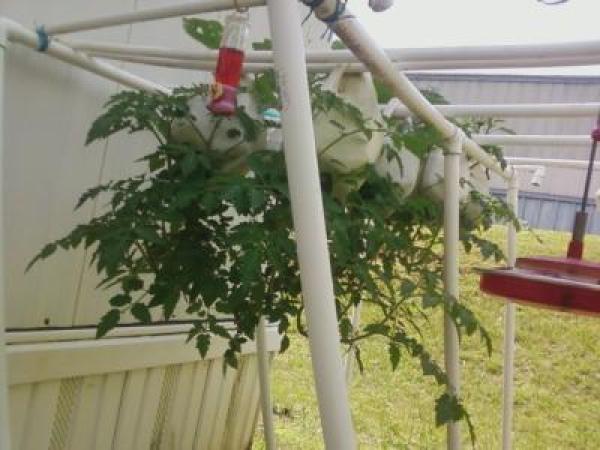 I plant my tomatoes in the bottom of milk jugs, with another plant on top such as peppers, and eggplants. I also made two milk jugs into a self watering planter for my strawberries, and used drink bottles to make a self watering, mini green house for the rose cuttings I'm propagating.
I plant my tomatoes in the bottom of milk jugs, with another plant on top such as peppers, and eggplants. I also made two milk jugs into a self watering planter for my strawberries, and used drink bottles to make a self watering, mini green house for the rose cuttings I'm propagating.
This page contains the following solutions.
Use empty gallon milk jugs for back yard planting season. The rabbits would eat all our new pepper plants. The only way to keep them away was to cut off the bottom and top of the milk jug and bury the wide bottom part in the ground a couple inches.
In the summer months, I have always kept plastic milk containers filled with water hidden behind group planters, so I do not have to go far when I water the pots. Now that we have a hosepipe ban, this is a good idea.
Here are the questions asked by community members. Read on to see the answers provided by the ThriftyFun community.
I have a bad back and needed an easier, lighter way to water and feed my plants. I recycle my 1 gallon plastic milk jugs for my garden.
I cut the top of the jug just wide enough to fit my hand in and punch four holes in the bottom of the jug. To hold the jug in place, use a twig or stick picked up from the yard and push it through one of the holes into the soil near the plant. Works great as I can add fertilizer to the jug and fill it to 1 gallon (the exact amount in the directions) and NO carrying or lifting water pails!
I do all my veggie gardening in recycled 5+ gallon buckets, which means more watering per plant. I can fill the milk jug to the top and move to the next plant knowing I've given the plant one gallon of fresh water that will slowly leak to give the root time to "drink" as needed.
By txrosee from Montgomery, TX
I tried this for a slow watering concept, but the squirrels kept knocking them down!
Recycle your milk jugs by adding holes to the screw style caps and the handle and to use for watering seedlings in your garden. This is a page about using a plastic milk jug for watering seedlings.